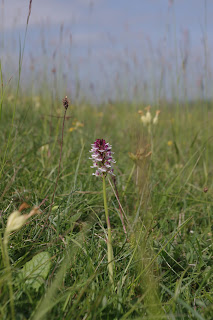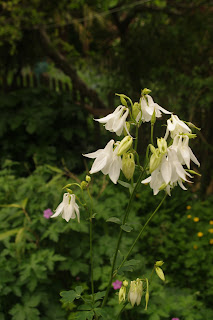Walking over Knocking Hoe on Saturday I was reminded of my entry last week when I noted that Hawthorn is in flower all over the place. As mentioned they are generally remnants of old hedgerows.
The ancient hedge lines defined small fields and many were grubbed out to create expanses of arable, others were neglected. Some still form boundaries as is the case with the perimeter of the nature reserve. This hedge is possibly still maintained by traditional hedge laying from time to time or at least given a flaying every now and then. The Hawthorns are shrubby rather than tree size.
Hawthorn will self-seed where conditions allow. This one is some distance from the nearest hedgerow, presumably not planted in isolation.
These Hawthorns have spread to become a mini-wood near the entrance of the reserve. Actually this can present a challenge where nature conservation is concerned. Left to its own devices much of our island wants to revert to woodland i.e. "succession" where open ground becomes scrub becomes trees.
In a sense that is desirable from an ecological point of view. Then again Knocking Hoe is a treasure trove of species whose natural habitat is chalk grassland. Historic agricultural practises created this niche and in our time it is maintained as a conservation based environment.




























